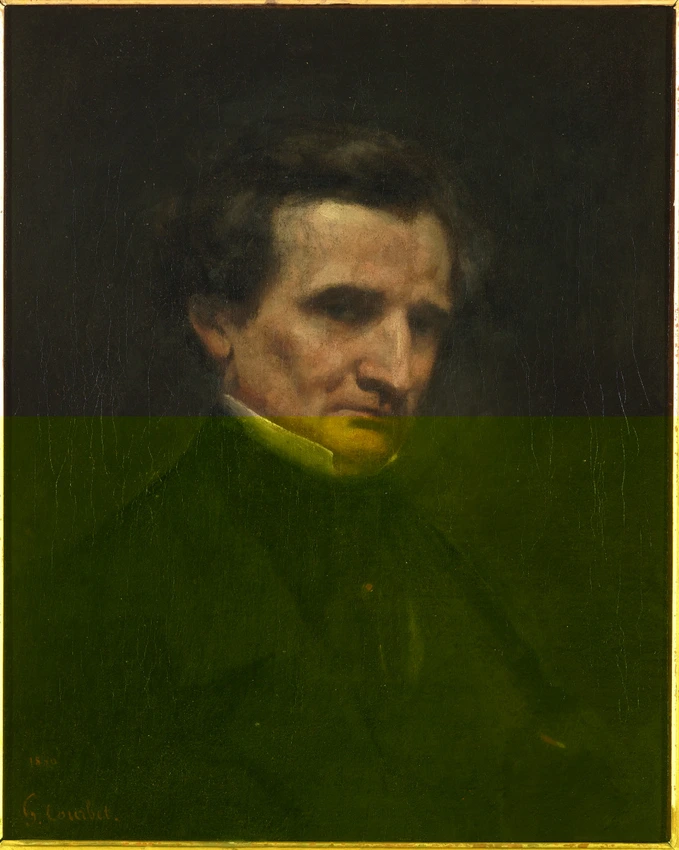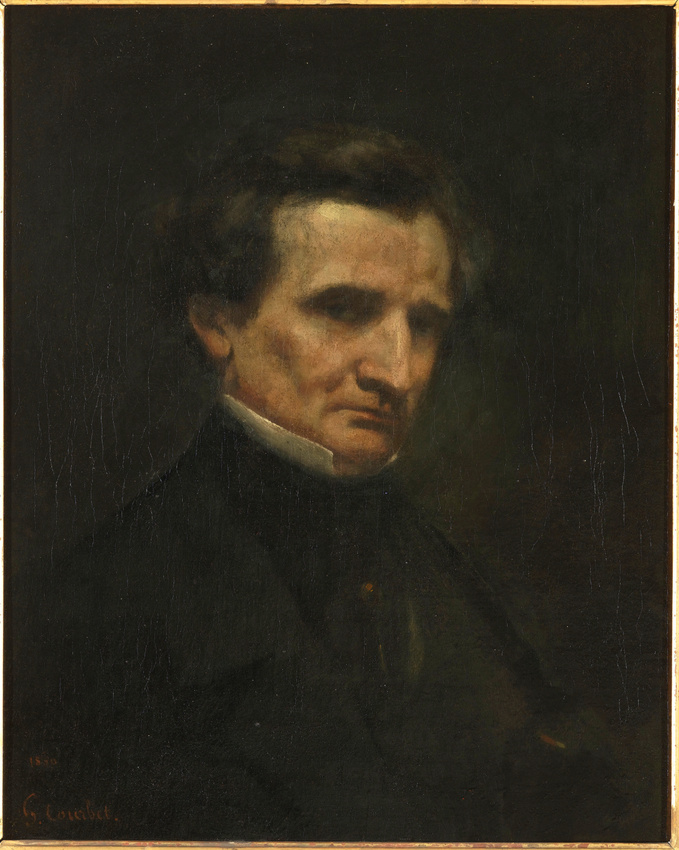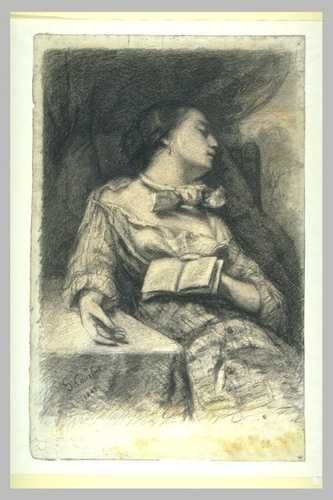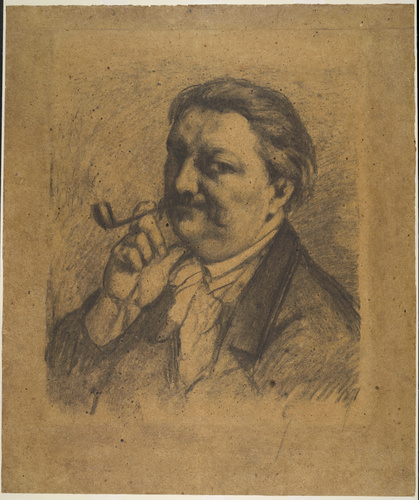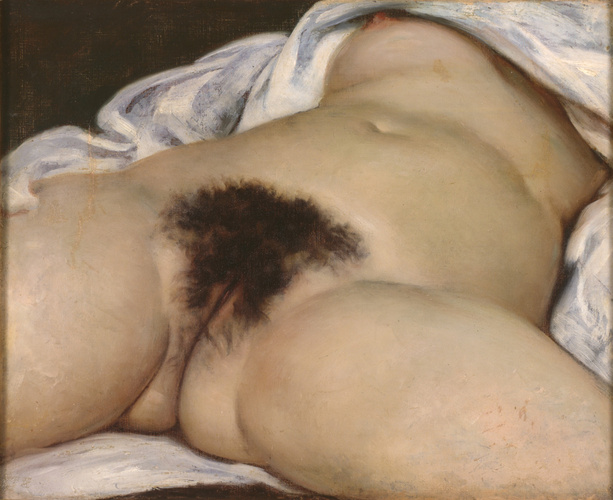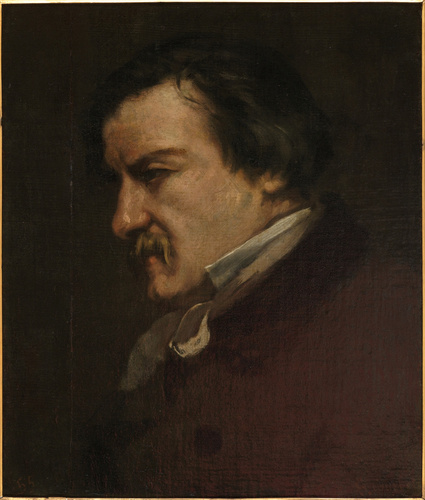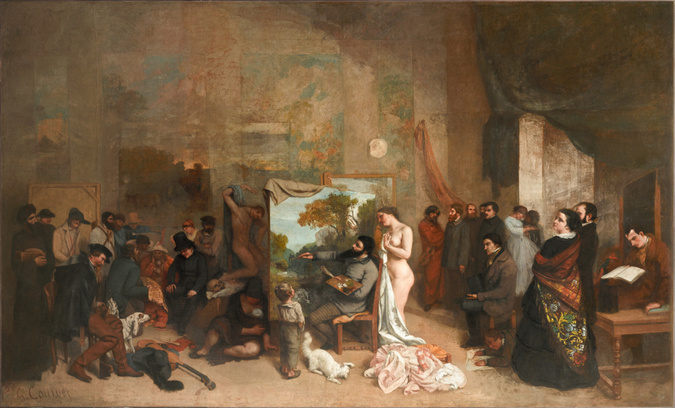Hector Berlioz
It was through mediations of Francis Wey, a great friend of Berlioz, that the musician agreed to sit for a portrait at Courbet's studio in 1850. Courbet must have been delighted at such an opportunity. Berlioz, then aged about forty-five years old, was an important figure on the artistic scene, and was a good friend of Victor Hugo, whom Courbet admired.
However, the meeting was not a success. Berlioz was a secretive man, easily offended. Courbet, on the other hand, prided himself on his musical ability, and took advantage of the composer's presence to demonstrate his talents as a singer. "During the sittings", recounted Georges Kial, "[Courbet] took it into his head to sing his songs, "tuneless laments" [...] and to offer them as examples of popular music. At first Berlioz thought it was a joke; then, realising that to Courbet it was nothing of the sort, he took him for an idiot". We do not know if it was his annoyance over this that caused Berlioz to refuse the portrait once it was finished.
The work fits into the pictorial tradition, with the face standing out against a dark background. It also draws on the Romantic image of the melancholic musician. But it must be said that Courbet did not present a flattering image of the composer. He made Berlioz look much older; the painter did not make any concessions for his gaunt face. Keeping to his principles, Courbet took "the true image of the model's face", without trying to give Berlioz's thin, wiry body, the grandiloquence of his compositions. Nadar, on the other hand, in a much later photograph, created a monumental portrait of Berlioz, using the device of a broad, thick coat.
In spite of everything Courbet was rather attached to the painting, as we can see by its presence in the artist's private exhibitions in 1855 and 1867. Still regularly exhibited after the painter's death, this portrait has become, somewhat ironically, the most famous image of Berlioz.
Courbet Dossier
